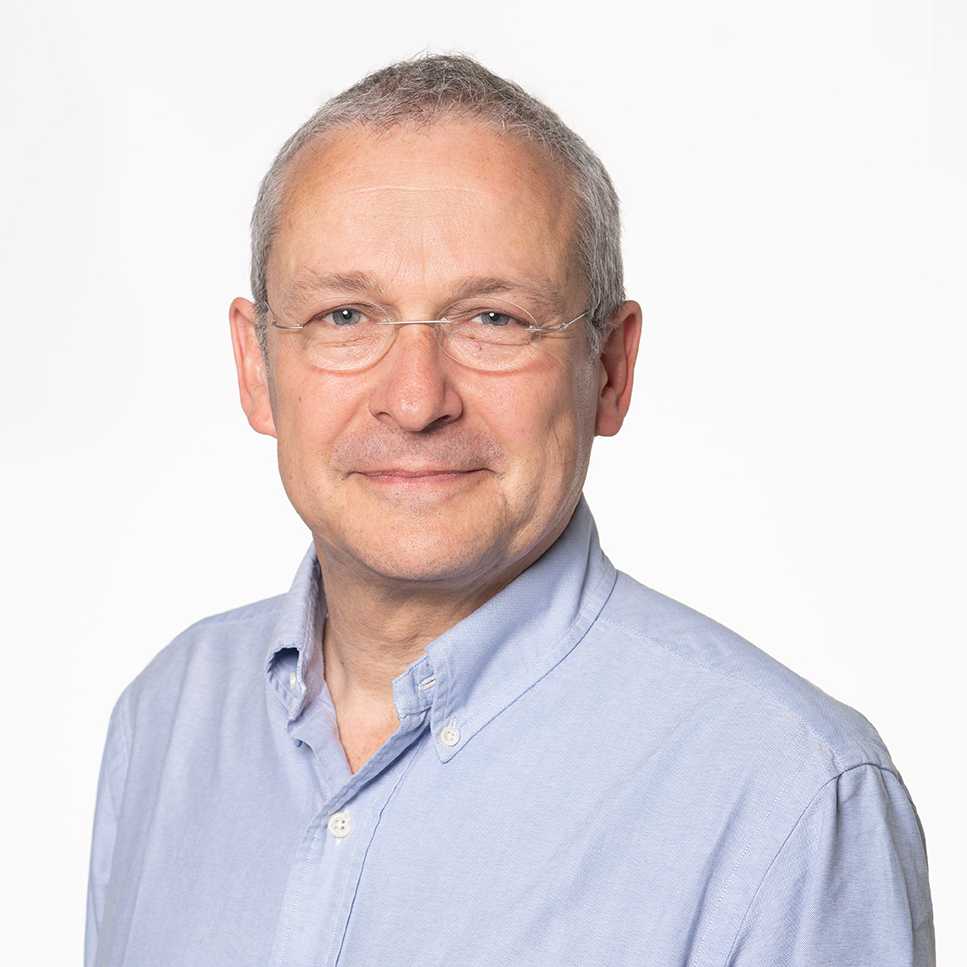Developmental Immunology Lab - led by Georg Holländer
Contact

The thymus provides an indispensable microenvironment that promotes the development of naïve T cells and selects an antigen receptor repertoire purged of vital “Self” specificities and poised to react to injurious “Non-Self” antigens (pathogens, tumours, others). To perform these crucial functions, thymus stromal cells form an intricate three-dimensional scaffold-like structure that provides separate niches composed of distinct cell types including thymic epithelial cells (TEC), and different mesenchymal cells such as fibroblasts and endothelial cells. TEC constitute the major component of the thymic stroma and can be categorized into separate subtypes based on their specific gene expression profiles and their structural and functional characteristics. Similarly, different mesenchymal cell types are distinguished that accomplish their critical functions via the production of extracellular matrix components, morphogens and key growth factors. Despite their indispensable roles for the function of the thymus, the genetic and epigenetic control of the cells’ differentiation from lineage specific precursors to mature stromal cells remains incompletely understood.
The role of miRNAs in TEC development
TEC provide unique cues for the life-long selection and differentiation of a repertoire of functionally diverse T cells. Rendered miRNA deficient, these stromal cells lose their capacity to instruct the commitment of haematopoietic precursors to a T cell fate, to effect thymocyte positive selection and to achieve promiscuous gene expression required for central tolerance induction. Using novel molecular approaches we study the repertoire of miRNA in distinct TEC subtypes at different stages of development and identify their important roles in specific aspects of TEC biology. Moreover, we investigate the role and impact of feedback interactions of the RNA binding protein Lin28A with members of the let-7 miRNA family which are involved in multiple mammalian developmental processes.
The importance of the transcription factor FOXN1 for thymic epithelial cell development

The transcription factor FOXN1 is a master regulator of thymic epithelial cell development and function and it’s expression is developmentally regulated during organogenesis. FOXN1 participates in multi-molecular nuclear condensates essential for the factor’s transcriptional activity. FOXN1’s C-terminal sequence regulates the diffusion velocity within these aggregates and modulates the binding to proximal gene regulatory regions. These dynamics are significantly altered in variants of FOXN1 that lack a normal C-terminal domain. Utilizing newly created static and inducible genetic model systems in parallel with chromatin and mass spectrometry studies provide a genome wide map of direct Foxn1 target genes, their binding motifs and identify co-factors associated with FOXN1. Studies are ongoing to elucidate the roles of FOXN1 co-factors and to identify further structural domains of FOXN1 implicated in it’s function. Both lines of investigations are related to the phenomenon of thymus senescence, a process that is initiated in humans as early as the second year of life, and that has implications for functional immune responses in the elderly population.
The role of epigenetic modifications for thymic epithelial cell development and function
Development and function of TEC are regulated by their epigenetic landscape including repressive and permissive histone modifications. The repressive H3K27me3 mark is placed via the catalytic activity of the polycomb repressive complex 2 (PRC2). A deficiency of PRC2 function targeted exclusively to TECs results in a hypoplastic thymus with reduced ability to express “Self” antigens and a compromised capacity to select a normal T cell antigen receptor repertoire. The absence of PRC2 activity reveals a transcriptomically distinct medullary TEC lineage that incompletely off-sets the shortage of canonically-derived medullary TEC whereas cortical TEC numbers remain unchanged. Hence, normal PRC2 activity and placement of H3K27me3 marks are required for TEC lineage differentiation and function and, in their absence, the thymus is unable to compensate for the loss of a normal TEC scaffold. Experimental efforts in the lab are now directed at understanding in detail the molecular mechanisms that account for this evident need for the catalytic activity of PRC2 in TEC lineage differentiation and function.
Mapping the complexity of the thymus microenvironment at the cellular level

The thymus stromal compartment provides a complex three-dimensional scaffold that provides essential niches and molecular cues for the controlled development and selection of maturing T cells. Dyes that recognize cellular constituents and the conventional use of fluorophore-conjugated antibodies to specific epitopes allow only limited multiplexing, a restraint that is largely based on the number of fluorophores which can simultaneously be used without challenges arising from overlapping spectra. The CODEX (for CO-Detection by indEXing) platform overcomes these restrictive limitations and permits extensive and concurrent deep phenotyping of a single tissue section with as many as 52 or more different epitopes by using sequential image captures employing a standard, 3-color fluorescence microscope platform. Combined with other (single cell) spatial methods, the CODEX platform is used to define the composition and architectural organization of the thymus microenvironment at high resolution to identify novel physical niches relevant for T cell development in health and disease.
Publications
For recent publications please consult Google Scholar.
Georg Holländer is the external page director of the Botnar Research Centre for Child Health.
He is also the external page Head of Department of Paediatrics, University of Oxford, UK, and he leads the external page research group Pediatric Immunology at the University Children's Hospital Basel and the external page Immunobiology research group at the University of Basel's Department of Biomedicine.
Watch Georg Holländer's inaugural lecture held on 16 November 2021.